There are two kinds of home improvement. One type amounts to little more than maintenance. It could hardly be called “home improvement” in fact; “home status quo” would be more appropriate. The second is the actual addition of value to the home.
This weekend’s project tackled the latter. More than simply adding value to our home (and the monetary value would be negligible), this weekend’s venture will add value to our lives in the form of fresh peppers, beans, and zucchini. We began our garden.
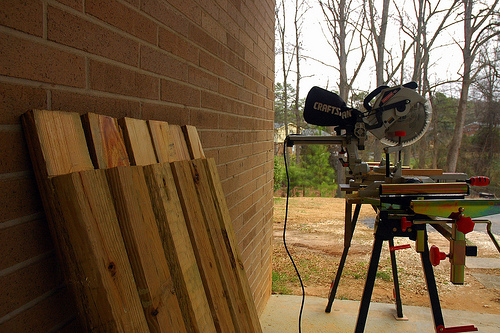
“Isn’t February a little early?” you ask. It certainly is for planting, but we weren’t planting. We were creating a bed for our coming lasagna garden.
There are many ways of creating a layered garden (hence the name “lasagna”), and many are “no dig” methods. We elected to go for the all-day, back-breaking, line-your-garden-with-timbers method.
Of course, this meant a lot of initial cutting, which was great, because I got to use some of the equipment Papa and Nan have been buying for me over the last two birthdays.
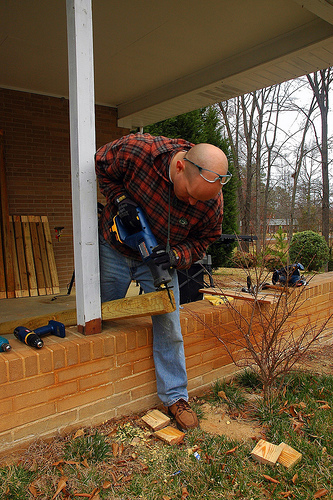
Still, in order to have a nice cut that didn’t go too far into the timber, I had to pull out the trusty reciprocating saw — the tool every homeowner should own — to finish it off.
K, being the surveyor that she is, wanted to line things out before digging. It was useful, to be sure, but I was simply planning on digging it out with timbers for reference.
We got a cute picture out of it, though.
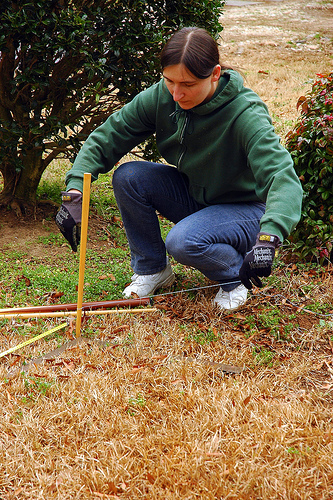
The real work — the heavy lifting, to use a cliche — came next: the digging. Getting land level gave me a new appreciation for landscaping crews.
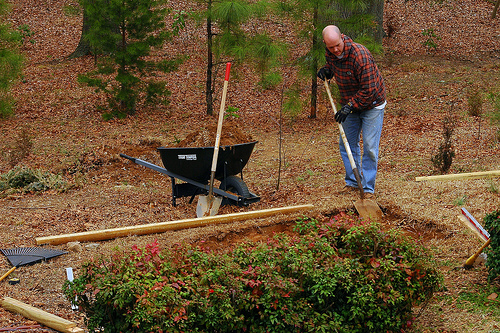
Once everything was level, the rest went fairly quickly. Driving ten inch spikes through three layers of landscaping timbers (though pre-drilled) aside, it was fairly pleasant work.
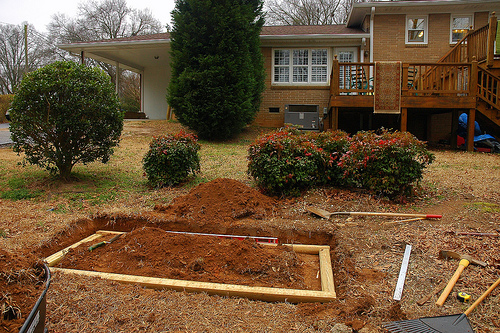
A little filling in the cracks and final digging — then we were ready for the first layer.
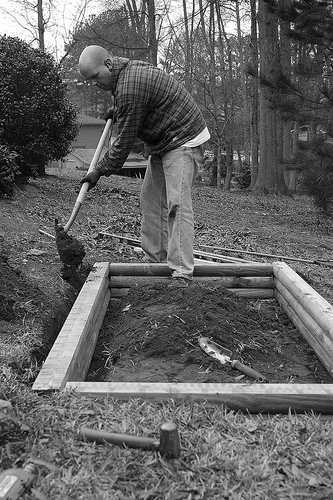
The idea of lasagna gardening is simple: layer leaves, compost, peat moss, and manure on a bed of paper (to keep out weeds, I believer) and simple plant. No tilling, no nothing.
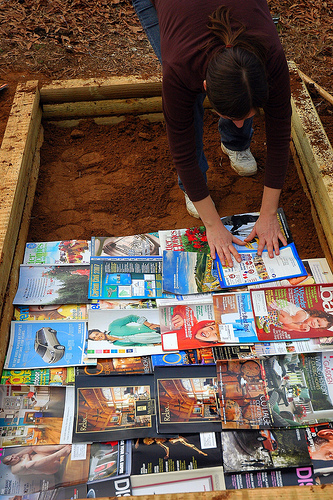
Lacking newspapers, we used magazines. I’m hoping the glossy paper doesn’t have a detrimental effect. (No one Google it for me — ignorance is bliss.)
Whether or not the best method, it made for an interesting image
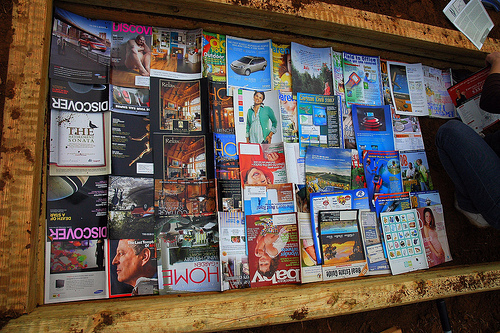
After the paper, we added our first layer: leaves. We’ll let it settle before adding the other layers.
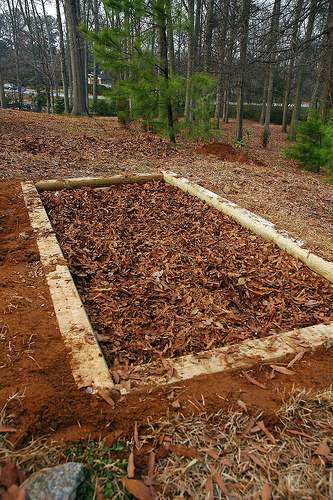
In the end, I’m not sure what our neighbors found more amusing: laying out issues of Discover magazines or taking pictures of every step.